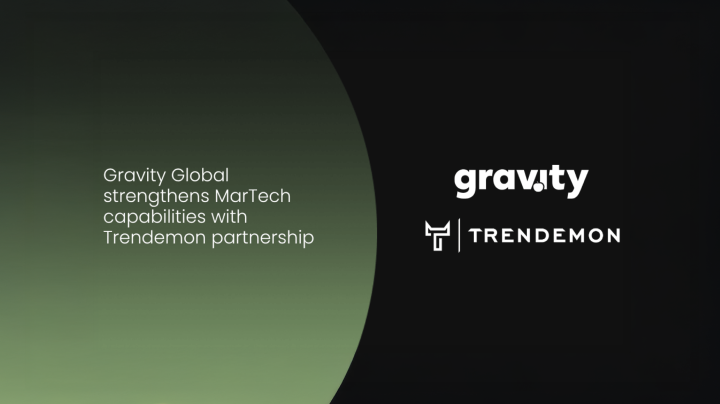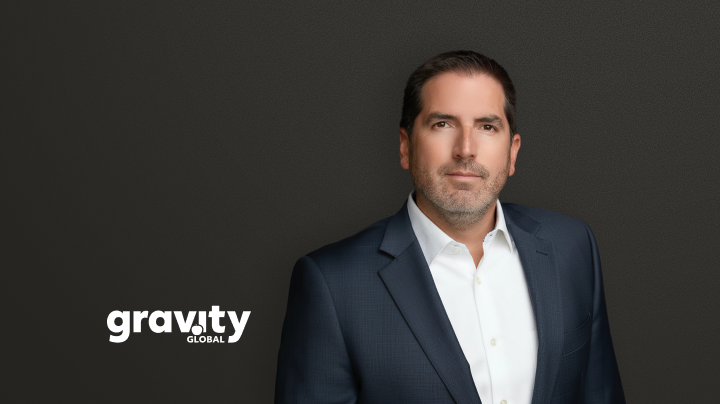Recap Buyer on Personas and Journey Mapping
A recap of Shay Ruggles’ experience at the NN/g UX Conference in Boston learning about Buyer Personas and Journey Mapping.
Nielson Norman Group (NN/g) UX Conference Boston
In case you aren’t familiar, the Nielson Norman Group (NN/g) is at the forefront of the user experience (UX) field, conducting: ground breaking research, consulting and trainings around the world. They are the leaders in the UX space and we take their research seriously here at Gravity.
I was fortunate enough to have Gravity send me for the second time to a NN/g conference, this time in Boston. NN/g UX Conferences are all-day training sessions on a single topic. They provide in-depth information on the subjects as well as practical working sessions to allow attendees to get practical experience in the subject area.
This year, I took two courses:
- Buyer Personas: Turning User Data Into User-Centered Design
- Journey Mapping to Understand Customer Needs
Buyer Personas: Turning User Data Into User-Centered Design
I have worked with personas my entire career and have certainly seen a broad range of what people consider personas in my day. Done correctly, personas can be a powerful tool, establish common ground within teams and humanize these “users” we keep talking about. Done incorrectly, they can seem silly, out of touch with reality and quite frankly, a joke.
I was interested to learn the latest thinking, how to craft a proper persona and how they might be able to improve our process. What I learned…
Buyer Personas can be highly effective when done correctly.
- If you see the chart below, this study was testing the effectiveness of personas.
- The grey Alpha team received a brief and image boards, the pink Beta team received a brief and a persona. The clear winning team received a brief and persona with a storyboard scenario visualizing the scenario in which the product would be used.
- Clearly, when teams are aligned with who their users are and are attuned to what their motivations, goals and scenarios entail, the most effective designs can be created.
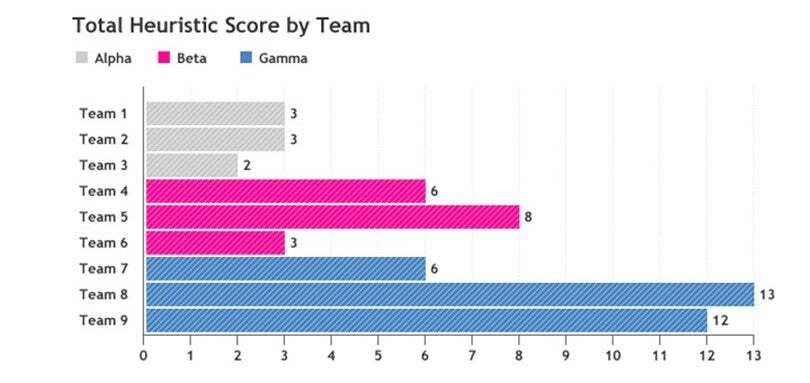

http://www.frontend.com/thinking/the-effectiveness-of-using-personas-in-product-design-html.html
This is a single study, but it illustrates the point: personas are an integral step to understanding WHO we’re designing for and it provides the first step to start stepping into their shoes and design for them, not for us.
Personas work because:
- It’s in our human nature to understand, relate to and share the feelings of other people by seeing their faces, learning their stories and seeing how they live
- People are natural storytellers and like to hear and share stories. Personas help us remember and relate who our users are through storytelling.
- Theory of mind. We’re able to predict a person’s behavior by understanding their mental state of mind. Persona’s help us think from another person’s shoes.
Why we should use them:
- Focus your team on specific users and ensure everyone is using the same reference point.
- Creating a basis for making decisions and deriving features and functionality based on real people, not what we want
- Defending decisions on behalf of our users
Buyer Personas Don’t Need to Take a lot of Time or Research to Create
One thing that I really appreciate about the NN/g conferences is that they provide practical and concrete steps to put concepts into action and they always provide more than one way to do something. Not everyone can take the time to (or has access to their customers to) do full on ethnographic field studies, get large sample sizes in their quantitative research or hire a market research firm.
But, focus is better than nothing at all and there is a wealth of data that can be mined from existing resources including anyone and everyone within the company that speaks directly to customers, web analytics and usability tests. Combining existing resources with a workshop with current stakeholders, personas can still be extremely valuable.
Journey Mapping to Understand Customer Needs
I didn’t know much about journey mapping before this course and I’m glad I took the time to learn more about it.
Journey maps are a visualization of the series of interactions a person has with a company while attempting to accomplish a goal over time and across multiple channels. They are used to further understand and address customer needs and pain points.
Journey maps are an invaluable tool for companies big and small to focus their efforts on what’s truly important to their most valuable customers/potential customers and relieve any friction points that could be the source of customer attrition or reasons why they’re not connecting with your brand in ways you wish they would.
Elements of a Journey Map
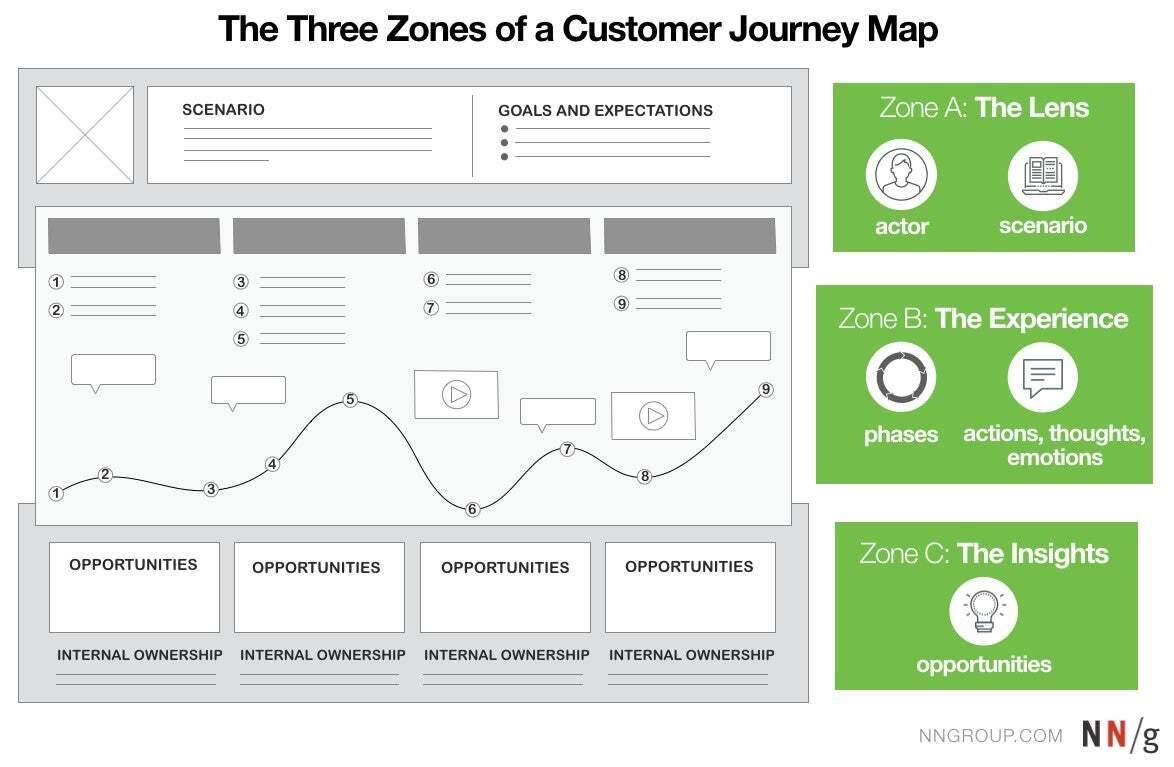
This is a journey map template from the NN/g for reference. https://www.nngroup.com/articles/journey-mapping-ux-practitioners/
All journey maps should (not that many examples you find online do not contain all of these elements to their detriment) contain the following elements:
- Zone A: The Lens: The “actor” and their scenario. The Lens sets the scene and provides context. This is an excellent dovetail to personas, wherein you can select a persona and choose their top use case to start.
- Zone B: The Experience: This section should contain the phases of their journey as well as their actions, thoughts and emotions throughout this journey. This is the meat and potatoes of the chart.
- Zone C: The Insights: This is where most journey maps fall short but this is the most important part! This section should include the teams accountable for making change and what those changes should look like to relieve pain points along this journey. This is where the action elements and next steps belong.
Example Journey Map
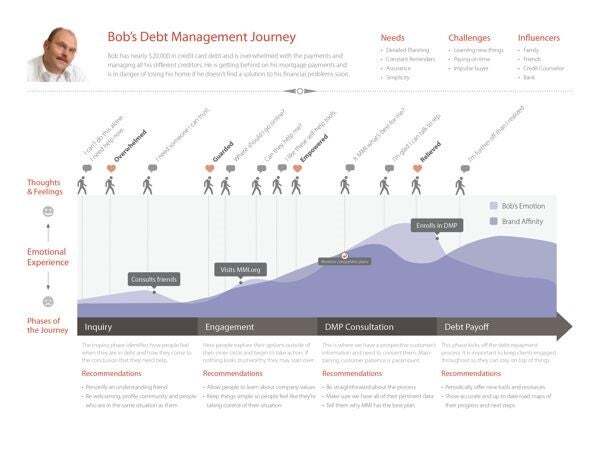
This example clearly shows all components of the journey map and is also easy to read and understand. Journey maps can become too complex to be helpful. https://www.behance.net/gallery/6473983/UX-Deliverables
Creating a Journey Map
Creating a journey map involves internal investigation and research gathering, assumption formulation and synthesize, external research to fill in the gaps and validate or invalidate assumptions and of course the actual mapping.
While it’s a lot of work, defining and using journey maps to focus on the holistic experience your customers have with your organization is what creates amazing experiences for customers at all touch points. Seamless user experiences don’t just happen. They take work, they take communication across all groups within an organization and they take leadership to pull it all together.
Below are some images of the Journey Mapping attendees creating their journey maps from sample resources. It was interesting to see how our many groups put together different but similar maps based on the same information.
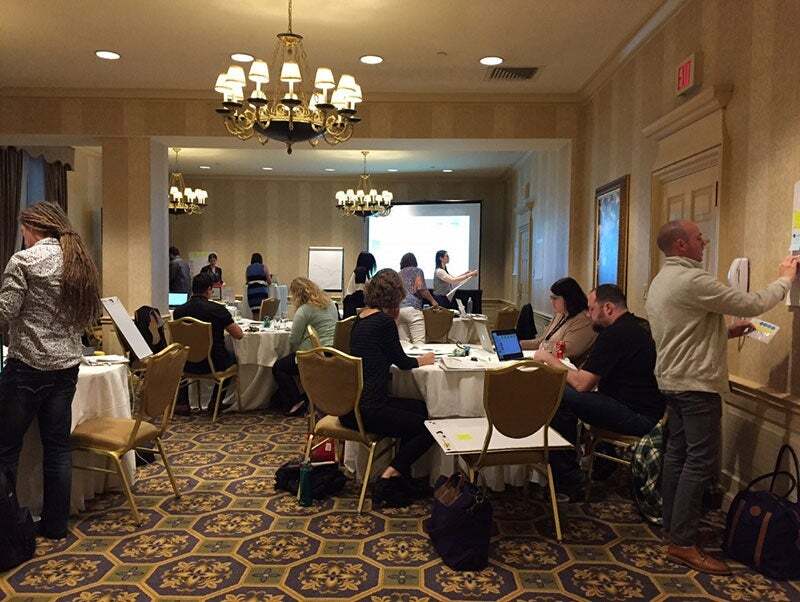
_#nngux Boston attendees working on their journey maps._
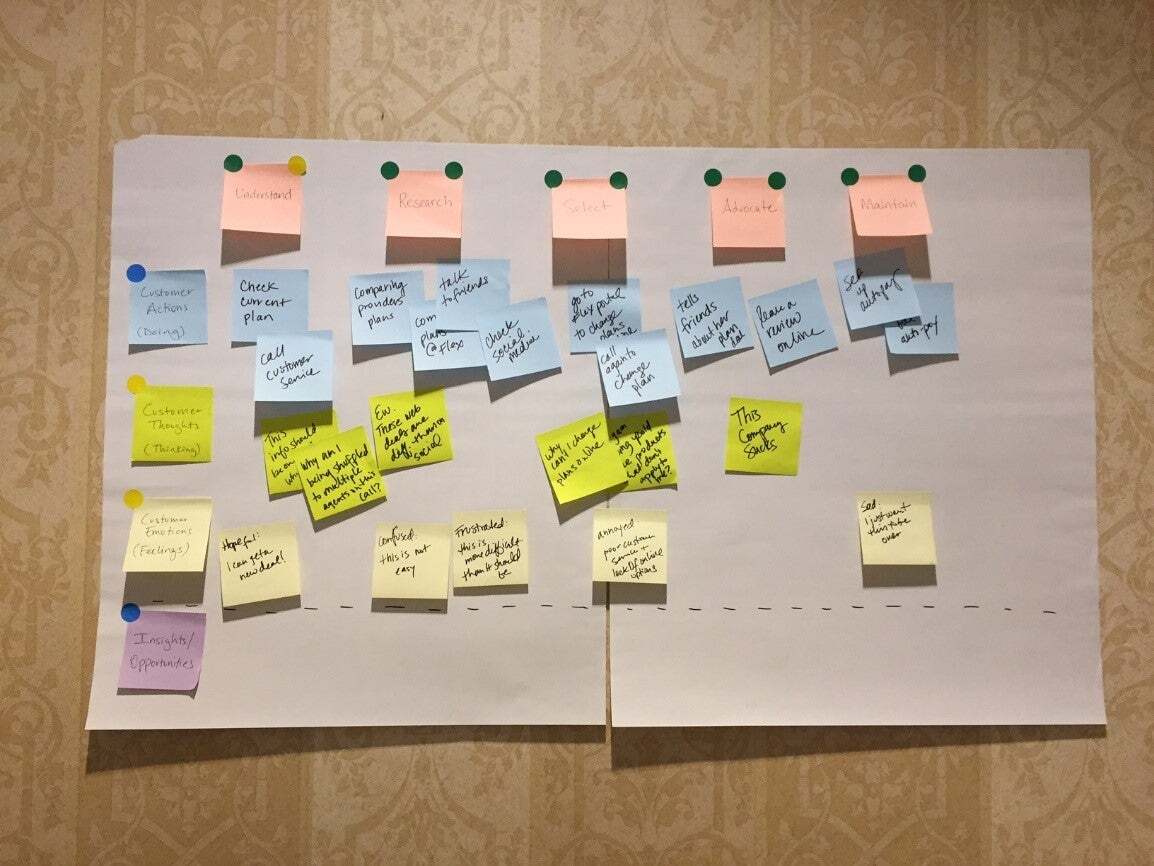
My group’s journey map assumptions starting to build our map.
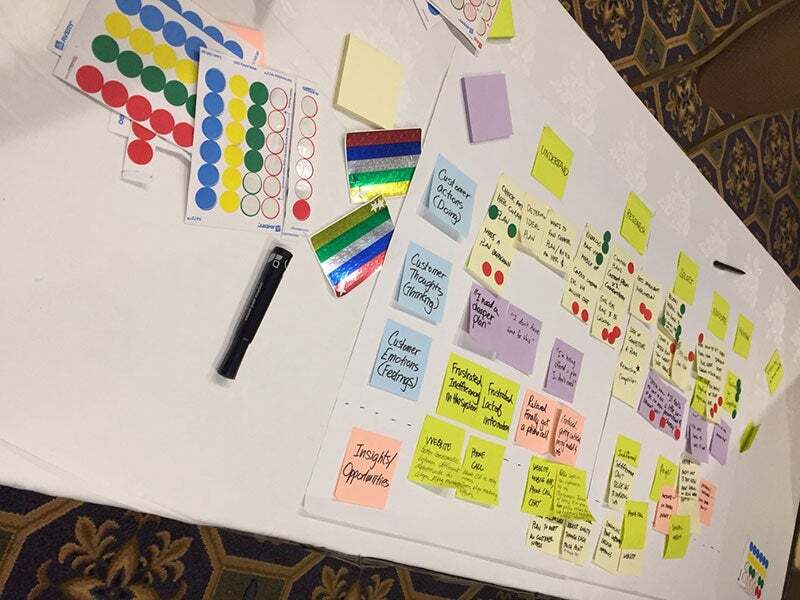
#nngux teams working on their journey maps in progress.
NN/g UX Certification
The NN/g offers a UX Certification to professionals who take 5 of their training courses and pass the test for each course. After returning home from the conference, with sweaty palms (when was the last time you took a multiple-choice test??) I passed both tests and in combination with the 3 courses I took in San Diego, achieved the UX Certification.
I’m proud to join the 2,940 other certified NN/g UX professionals in this accomplishment!

If you are interested in learning more about UX, which I encourage everyone to learn more, the NN/g UX Conference is an excellent way to not only learn, but to meet other professionals in the field. I have met everyone from graphic designers, marketers, UX researchers and UX recruiters in attendance with many years of experience in the field to people just starting to dip their toes in the water. Courses range from high-level HCI theory to courses on a specific focus like the two UX research based topics, to latest design and interaction implementation to integrating UX practices in lean and agile environments.
.png)
